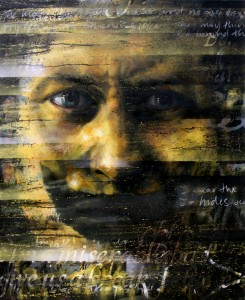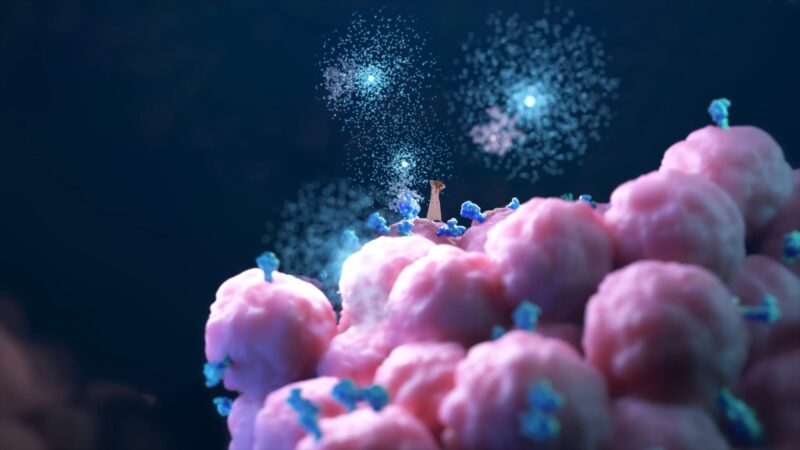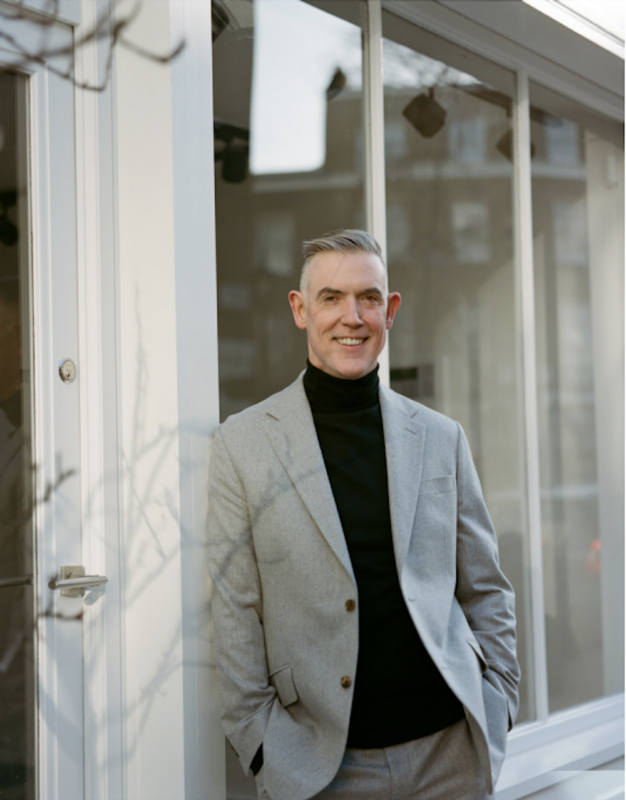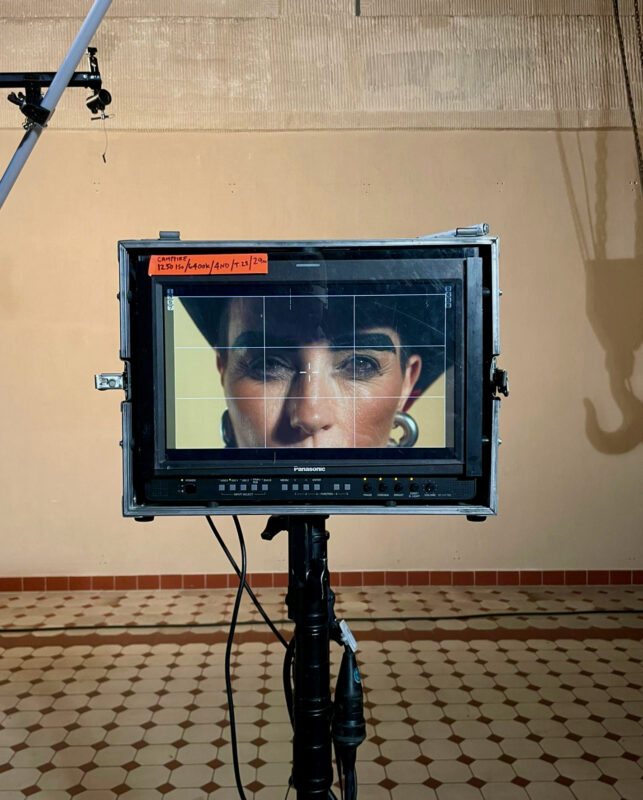
1 When did you start to make art?
I started drawing when I was very young and had a very hands-on approach to creativity. We had little money therefore I would love to make things and do things like paint my soldiers and their shields, make go-carts etc. I also did ‘commissions’ of pop stars at primary school while I was supposed to be doing class work. By the age of around 11yrs, and after seeing the ‘The Stranglers’ and ‘The Damned’ daubed on local walls, I became obsessed with writing my name everywhere, and got quite a local reputation.
2 How did you evolve into a professional artist?
I was very determined to move to London and study art, but also realised that I wouldn’t evolve and make the transition into being a ‘proper artist’ if I stayed in a small northern town. Whilst at university in London I started to do long gruelling hours in the studio – this gave me an idea of what being an artist would entail. I think doing my last solo show at Signal Gallery helped me to evolve enormously on lots of levels though.
3 What drove you to make art as a professional vocation?
I was half heartedly studying graphic design at college just before my mother died. After this sad period I realised I’d always wanted to be a painter and one day I just thought ‘fuck it’ and decided to act upon it. I started working at home doing paintings from photographs I had taken at punk gigs etc – it was quite a lonely period but I decided to go back to Blackburn College to do a pre-degree art course. At the interview they saw my work and accepted me there and then. I happily carried my soaking wet paintings home across Blackburn. I guess this was the turning point that drove me onwards.
4 Explain your inspiration?
I imagine like most people, we had a copy of Constables’ ‘The Haywain’ on our living room wall when I was growing up that I loved. I would get art books out of the adult section of library and take them home to study the techniques or copy images. When I was much older I discovered painters like Peter Howson and Lucien Freud who were a big inspiration to me. On the other hand, if you look at the photography on record covers like ‘Kaleidoscope’ by Siousxie and the Banshees or the monochrome ‘Zerox Machine’ by Adam and the Ants you can clearly see where some of my other influences came from too.
5 In what way does your inspiration transform into ideas?
I normally get excited about something and feel compelled to paint, firstly though I will probably lye awake in bed and work out how best to get the idea down on canvas.
6 From Ideas to production of art – how? And why?
(I think I’ve answered this in section 19)
7 Could your ideas be portrayed in any other medium? If so which?
I’ve recently been thinking of working with light boxes. I think my ideas would translate well, combining maybe photography and paint onto the light box surface and experimenting with various degrees of opacity etc. I’m not aware of anyone working in this way.
8 Which artists would you most like to blatantly rip off?
I would love to time travel back in time to innovative 1950’s New York and paint in a brash and confident manner like the American abstract expressionists did, especially Franz Kline. However, I think I already steal from my hero’s – a little bit of Lucien Freud, a snippet of Peter Howson, finished with a sprinkling of Kline.
9 Why is your art made?
It sounds pretentious but I can start to feel down when I’m not painting. It took me many years and a good few mistakes to realise that my heart is clearly in my art. I have a lot of mental energy and I feel I need the painting to release these ideas, feelings and anxieties. My art can be like a release and a form of exorcism for me.
10 What does being an artists mean to you?
It means I have the opportunity to create other worlds and capture moments and feelings.
11 Are you happy with your reasons for making art? i.e Are there any trade offs that make life hard? Yes I’m happy with my reasons, I wouldn’t want it any other way. However, the sleepless nights are a bit of a down side.
12 When does your art become successful?
My art becomes successful when I get that certain inner glow on completion of what I consider to be a good, strong painting. I’m usually a little mentally exhausted by this stage – but it’s one of the best feelings in the world! Sadly, selling a painting also seems to give validation to a piece of work – the fact that someone wants to pay for it and hang it on their wall is still a monumental thing for me. Maybe this will change in the future,
13 What is art?
I think art can mean different things to different people. For me it’s about expressing myself and my ideas.
14 How do you start the process of making work?
At the moment a lot of my paintings are based on feelings or memories. I will then try to visualise how this idea could work compositionally on canvas. In conjunction to this I’m probably stretching and priming a canvas. I will either gather source material or I’ll get the camera and tripod out ready to shoot some pictures. My upcoming show has a lot of calligraphy and writing in it so I will sit and get some words down that I feel will encompass my idea.
15 Who prices your work? And how is the price decided upon?
I think the whole pricing of art issue can be a fathomless mystifying pit. Chris at Signal Gallery has the final say on the prices. In relation to my contemporaries, I think my prices are accessible and realistic.
16 What is your next; move,project,show etc?
I’m currently working hard towards a solo show ‘Heart In Darkness’ at Signal Gallery, London in January. In 2009 I hope to experiment a little more, maybe working out of the studio once the show is up.
17 What are the pros and cons of the art market?
I think the art market in Britain is very exciting at the moment. The whole urban/street thing has injected a lot of energy into the art scene and has also grounded it a little. On the downside I’m not overtly keen on the whole ‘flipping’ buy to sell approach though, but there you go.
18 Which pieces would you like to be remembered for?
I don’t feel I’ve created the work I would like to be remembered for. On the other hand, who knows what people will be admiring and studying still in fifty years time?
19 Any routine in making your artwork? If so what?
It’s ideas first, then I create or find photographic source material that I play around with or chop up in Photoshop. Then I start to work on the canvas, followed either by applying painted collage pieces I’ve prepared earlier or I will add more lettering or layers of paint.
20 What has been the biggest break in your career?
My last solo show definitely pushed things forwards without a doubt.
21 Who has been the biggest influence on you?
Artistically I would have to say Peter Howson, although I now no longer study his paintings.
22 How many artworks have you given away and to whom?
I’ve given away paintings to charity over the last year for issues like homelessness and children of alcoholics etc. I also gave earlier works to charity shops in Wood Green when I was living there.







